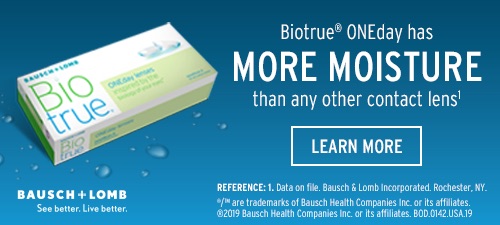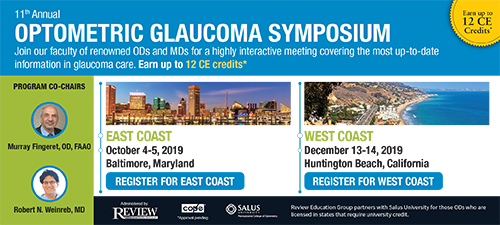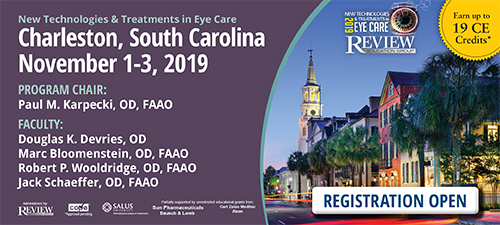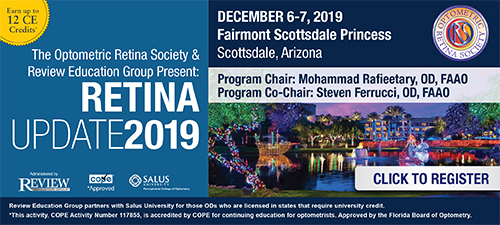
A
weekly e-journal by Art Epstein, OD, FAAO
Off the Cuff: What of Our Young?
Except for the humidity, anathema to an Arizonan, Orlando turned out to be a superb place for the ever-growing Academy of Optometry annual meeting. One clear sign of the health of the conference was the exhibit hall, which had more exhibitors and attendees than in memory. Seeing this growth was a pleasant change from years ago when I served as Exhibits Chair. The classes were also jammed. Over the past months, I’ve spent a good deal of time kvetching about the challenges and problems the profession faces. Challenges and problems are certainly not new for optometry. The profession has dealt with adversity and discrimination since its inception. Despite this, history shows how successful we’ve been and how far we’ve come. Yet, looking at all of these young colleagues this past week, I realized how much more complicated things are for them than they were for most of us. The rate of change they will face in their careers is hard to fathom.
|
|||||
 |
||
| Water Exposure is a Common Risk Behavior Among Soft and Gas-Permeable Contact Lens Wearers | ||||
The Contact Lens Risk Survey (CLRS) and health behavior questions were completed online by a convenience sample of 1,056 soft contact lens (SCL) and 85 gas-permeable (GP) lens wearers, ages 20 to 76 years, to understand SCL and GP lens wearers' behaviors and knowledge regarding exposure of lenses to water. Participants were asked about exposing their lenses to water and their understanding of risks associated with these behaviors. Chi-square analyses examined relationships between patient behaviors and perceptions.
GP lens wearers were more likely than SCL wearers to ever rinse or store lenses in water (rinsing: 91% GP, 31% SCL; storing: 33% GP, 15% SCL). Among SCL wearers, men were more likely to store (24% vs. 13%) or rinse (41% vs. 29%) their lenses in water. Showering while wearing lenses was more common in SCL wearers (86%) than GP lens wearers (67%). Swimming while wearing lenses was reported by 62% of SCL wearers and 48% of GP lens wearers. Wearers who rinsed or stored lenses in water reported that this behavior had little or no effect on their infection risk, compared with those who did not. Both SCL and GP lens wearers perceived that distilled water was safer than tap water for storing or rinsing lenses. Despite previously published evidence of Acanthamoeba keratitis' association with water exposure, most SCL, and nearly all GP lens wearers, regularly exposed their lenses to water, with many unaware of the risk. |
||||
SOURCE: Zimmerman AB, Richdale K, Mitchell GL, et al. water exposure is a common risk behavior among soft and gas-permeable contact lens wearers. Cornea. 2017;36(8):995-1001. |
||||
 |
||
| Ocular Surface and Tear Film Status Among Contact Lens Wearers and Non-wearers Who Use VDT at Work: Comparing Three Different Lens Types | ||||
Researchers analyzed differences in the ocular surface appearance and tear film status of contact lens wearers and non-wearers in a group of visual display terminal (VDT) workers, and assessed differences between lens materials. In this cross-sectional study of 236 office workers, of whom 92 were contact lens wearers, workers provided information on their contact lenses (conventional hydrogel, silicone hydrogel or rigid gas permeable lenses) and exposure to VDT at work. Ocular surface and tear film status were determined by the presence of bulbar, limbal and lid redness, lid roughness and corneal staining type, and by Schirmer's and tear break-up time tests (TBUT). A generalized linear model was used to calculate the crude (cRR), and age- and sex-adjusted (aRR) relative risk to measure the association between ocular surface and tear film abnormalities, and contact lens use and type.
The aRR of ocular surface abnormalities was higher in contact lens wearers compared with non-wearers: bulbar redness (aRR 1.69; 95% CI, 1.25 to 2.30), limbal redness (aRR 2.87; 1.88 to 4.37), lid redness (aRR 2.53; 1.35 to 4.73) and lid roughness (aRR 7.03; 1.31 to 37.82). VDT exposure > 4 hours/day increased wearers' risk of limbal and lid redness. Conventional hydrogel wearers had the highest risk of ocular surface abnormalities, followed by silicone hydrogel wearers. Both contact and non-contact lens wearers had a high prevalence of altered TBUT (77.3 and 75.7% respectively) and Schirmer’s (51.8 and 41.3%). Regular contact lens use during VDT exposure at work increased risk of bulbar, limbal and lid redness, and lid roughness, especially in soft contact lens wearers. The high prevalence of altered TBUT and Schirmer's results in all participants suggested that VDT use greatly affected tear film characteristics. |
||||
SOURCE: Tauste A, Ronda E, Baste V, et al. Ocular surface and tear film status among contact lens wearers and non-wearers who use VDT at work: comparing three different lens types. Int Arch Occup Environ Health. 2018;91(3):327-35. |
||||
 |
||
| The Risk of Blepharoptosis in Contact Lens Wearers | ||||
The aim of this systematic review was to summarize and evaluate the risk of blepharoptosis in contact lens wearers. In a PubMed search, 393 papers were found using the terms "lens and ptosis." The abstracts were read and 16 full text articles were reviewed. Among them, five articles were analyzed. Five studies were subgrouped,and a meta-analysis of these data suggested there was an increased risk of blepharoptosis in hard contact lens wearers over non-wearers (n=7426, OR, 17.38, 95% CI = 3.71 to 81.29). One study was subgrouped, and these data suggested there was also an increased risk of blepharoptosis in soft contact lens wearers over non-wearers (n = 90, OR, 8.12, 95% CI = 2.68 to 24.87). The authors wrote that patients wearing rigid contact lenses should be advised of the risk of ptosis and that a history of contact lens use should be obtained in all patients who have acquired ptosis as previous authors have recommended. |
||||
SOURCE: Hwang K, Kim JH. The risk of blepharoptosis in contact lens wearers. J Craniofac Surg. 2015;26(5):e373-4. |
||||
| News & Notes | |||||||||||||||
| AAOF Announces J&J Vision J. Pat Cummings Scholarship Recipients The American Academy of Optometry Foundation, in collaboration with Johnson & Johnson Vision, announced the 2019 J. Pat Cummings Scholarship recipients. The award is given annually to second- or third-year optometry students who demonstrate the ideal eye care standards of practice, achievement in both academic performance and extracurricular activities, and participation with other professional pursuits such as involvement with patients through internships, community service and volunteer activities. View the participants. |
|||||||||||||||
| EyePrint Prosthetics Releases New Scleral Lens Technology EyePrint Prosthetics announced the development of its new scleral lens fitting software, ScanFitPRO, designed to simplify everyday contact lens fitting by employing EyePrint Prosthetic’s scleral lens designer algorithm to automatically design a lens in three-dimensional space. The practitioner can customize the fitting of the lens, using patented Elevation Specific Technology. ScanFitPRO utilizes the Pentacam’s Corneal Scleral Profile for scleral mapping precision. The CSP Report is generated by 250 Scheimpflug images covering a diameter of up to 17mm. Learn more. |
|||||||||||||||
| Allergan Donates Refresh Products to LAFD Allergan recently provided 15,000 bottles of Refresh products to the Los Angeles Fire Department to be distributed to first responders fighting the California wildfires. The donation is part of the company’s Refresh America program, which has donated more than $4.2 million (approximately 290k units) to first responders across the US since its launch in 2015. |
|||||||||||||||
|
|||||||||||||||
|
|||||||||||||||
|
Optometric Physician™ (OP) newsletter is owned and published by Dr. Arthur Epstein. It is distributed by the Review Group, a Division of Jobson Medical Information LLC (JMI), 11 Campus Boulevard, Newtown Square, PA 19073. HOW TO ADVERTISE |




